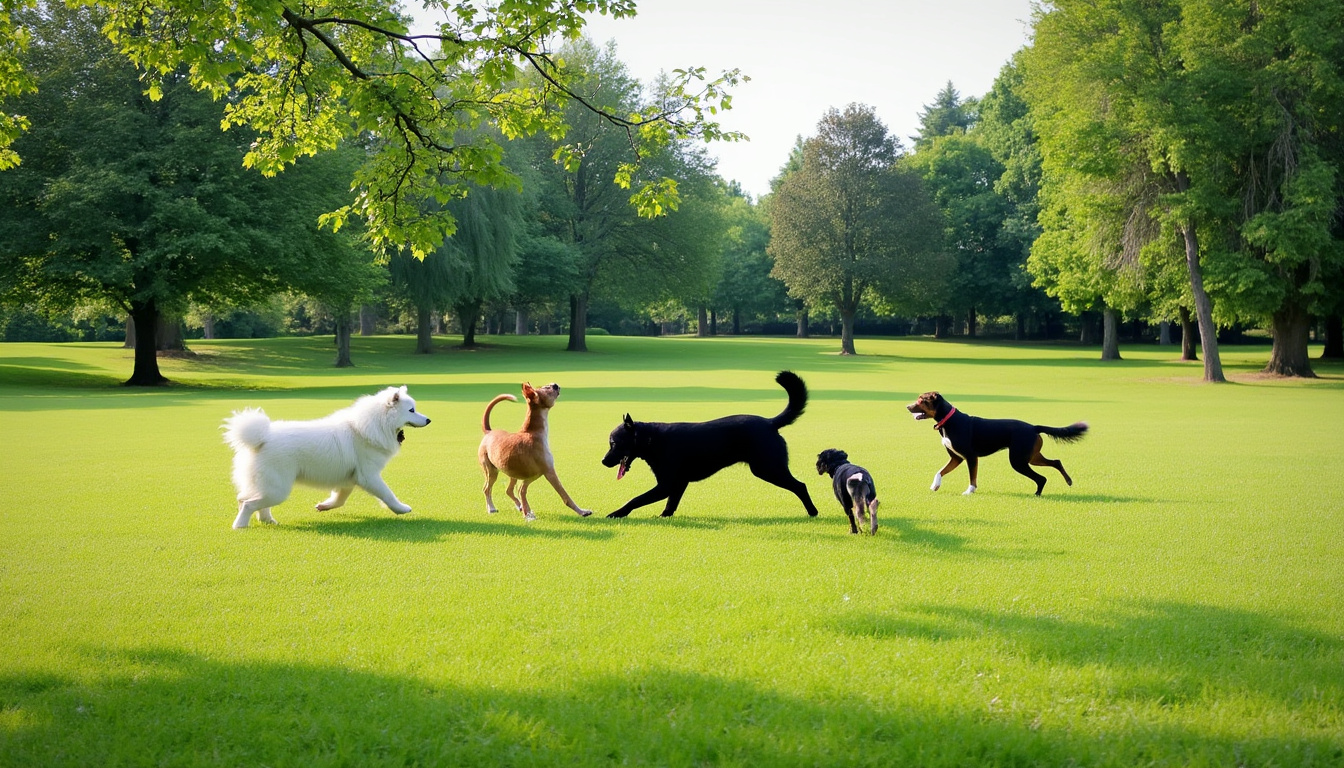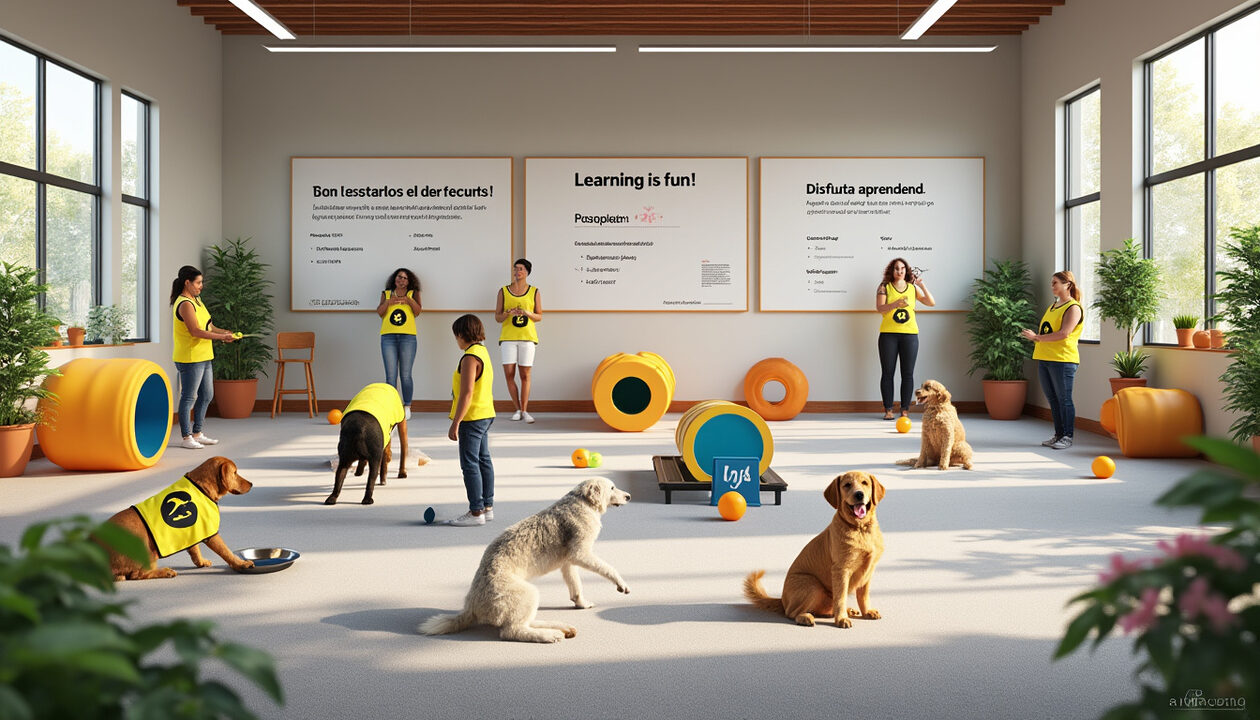Comment does the environment influence your dog’s behavior?
Understanding how the dog behavior environment interacts with our four-legged companion is essential for any owner. Every dog is different, and many factors influence how it will behave in different situations. By examining the varieties of canine behaviors, one quickly realizes that dog training and the environment should never be overlooked. Indeed, a dog’s behavior can change radically depending on its location, whether in an urban setting or in the wild.
A dog’s sociability is also related to its environment. The experiences it encounters throughout its life, as well as interactions with other animals or people, play a fundamental role. Often, this can be reinforced or hindered by external elements such as weather or ambient stress. There is much to explore on this fascinating subject and how companies like Royal Canin address these issues in their studies on nutrition and dog behavior.
The impact of the environment on the dog
The environment in which a dog evolves can profoundly modify its behavior. Indeed, there are several components to consider, ranging from the layout of the space to the level of auditory and visual stimulation.

Major environmental factors
The following elements can influence your dog’s behavior:
- Urbanity: City living exposes dogs to more stimuli, such as traffic noise, other animals, and crowds. This overstimulation can sometimes lead to anxiety disorders.
- Green spaces: Conversely, walks in parks can provide a relaxing environment conducive to socialization.
- The home: The domestic setting, the presence of other animals, and the family’s lifestyle habits also influence behavior. A veterinarian or a dog behavior educator can give you advice on arranging your space to promote a more positive atmosphere.
Regarding dog training, it is essential to take into account how the separation of the natural environment and the social aspect can impact your dog’s behavior. A study by TF1 Info highlighted that dogs showed different behaviors during lunar phases. This shows how much weather and the immediate environment play a vital role.
Diversity of canine behaviors depending on the environment
The varieties of canine behaviors are numerous and can vary from one dog to another. The same environment can evoke distinct reactions depending on each dog’s individual temperament. Here are a few examples of observed behaviors:
- Aggressiveness or fear: Some dogs may become aggressive or defensive when confronted with strangers in an urban setting, particularly in crowded environments.
- Playing: In contrast, other dogs may become more sociable and play with other animals or humans in a park. Regular visits to these environments can contribute to better sociability.
- Barking: Dogs may bark more often in stimulating environments where they feel threatened or exposed. Excessive barking is often a sign of stress.
In reality, any dog training and environment must be integrated while considering these factors, seeking to adapt the living conditions of dogs to minimize undesirable reactions. Cesar Millan, a famous dog lover, often emphasizes the importance of creating a calm environment for dogs to thrive.
The weather and its influence on dog behavior

It may seem that the weather does not have a significant impact on a dog’s behavior, but in reality, it is a non-negligible factor. For example:
- Heat: In periods of intense heat, a dog may become apathetic and less inclined to play, preferring to rest in a cool spot. A lack of physical activity may also lead to behavioral issues.
- Cold: In cold weather conditions, some dogs are reluctant to go outside, which can also affect their sociability or training, particularly due to a lack of outdoor exposure.
To ensure your dog remains well-balanced, it is imperative to adapt to climatic changes. Sometimes, adjustments in walk schedules or locations can make all the difference. Nutritional resources like Royal Canin can also play a role in managing these behaviors by providing the right diet, suited to each season and environment.
Managing canine behavior in the environment
To effectively manage your dog’s behavior in its environment, here are some strategies:
- Creating a positive environment: This includes safe play areas, well-defined spaces, and quiet moments. Avoid too many stimuli that can lead to undesirable behaviors.
- Early socialization: A puppy needs to be exposed to different environments, noises, and people to develop harmonious social behaviors. Ignoring this need can result in anxiety or aggressiveness.
- Monitoring behaviors: Pay attention to signs of stress, such as a tail between the legs, and intervene immediately. Providing a secure space can subsequently reduce negative behaviors.
Ultimately, every aspect of the environment plays a fundamental role in dog training and behavior. Do not hesitate to consult experts in the field or explore online modules to understand how to better manage this on a daily basis.
| Type of environment | Potential impact on behavior | Recommended actions |
|---|---|---|
| Urban | Increased stress, reactivity to noise | Calm walks, gradual exposure |
| Natural | Relaxation, sociability | Regular outings and play |
| Domestic | Feeling of security, familiarity | Creating a comfortable space |
It is clear that the influence of the environment on dog behavior is a vast and complex subject that deserves in-depth study. Only experience and observation will refine this approach, contributing to a harmonious life between the owner and their four-legged friend.












